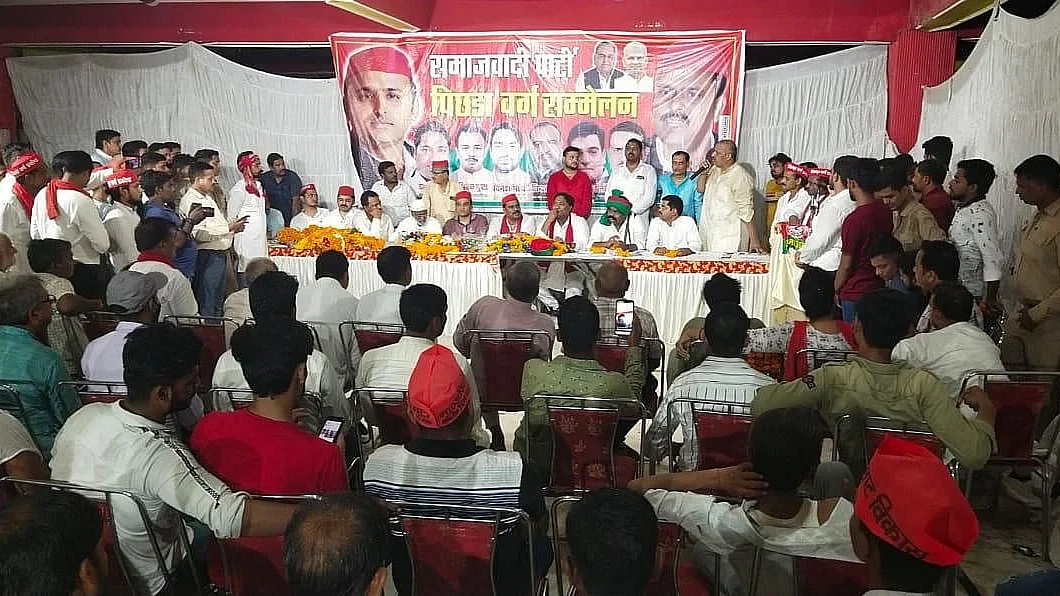In UP, all eyes are on non-Yadav OBCs
In the upcoming assembly election in Uttar Pradesh, the situation seems to have changed. The bonhomie between the BJP and the non-OBCs seems to be over

The results for the Uttar Pradesh elections would be out on March 10, but what is clear by now is that the non-Yadav OBCs will be a significant player in the electoral politics of this politically important and vibrant state as this has emerged as a distinct voting class.
A look at the three previous elections in 2014, 2019 Lok Sabha elections, and 2017 UP assembly elections shows that BJP drew rich political dividends because it stitched a new social coalition of non-Yadav Other Backward Classes (OBCs), non Jatav Dalit communities, and upper castes.
The party which once claimed to be the party of upper caste started claiming to have a rich representation of OBCs. But the resignation of three tall OBC leaders including three ministers - Swami Prasad Maurya, Dara Singh Chauhan and Dharam Singh Saini – has hit the party very badly. The perception has changed. The message started percolating down that OBCs have started deserting BJP and political pundits have started predicting a tough contest between the Samajwadi Party and the BJP.
Samajwadi Party has played its cards well. In an attempt to shed its Muslim-Yadav tag, it has increased the representation of the non-Yadav OBCs in tickets for the assembly seats announced recently.
The electoral contest in UP has remained triangular for the last two decades, with the BJP, the BSP, and the Samajwadi Party being the principal power contenders. Congress added spice to the electoral battle because of its domination in select pockets. The BJP enjoyed strong support among the upper caste, the BSP among scheduled caste, and Samajwadi Party among Yadav-Muslim communities.
There is another section of voters – called partisan voters – who are fence-sitters and decide the fall and victory of political parties. In UP, such voters are the non-Yadav OBCs. Till the 2012 UP assembly elections, non-Yadav OBCs decided electoral outcomes significantly, due to their alignment largely with the SP and BSP and a small section with the BJP.
The foundation of this vote bank was laid by the BJP chief minister Rajnath Singh in 2001. That year, he constituted a social justice committee headed by the then cabinet minister Hukum Singh to devise an equitable policy for the distribution of reservations. The committee recommended a quota within the quota for the non-Yadav OBCs.
At that time, Samajwadi party had vehemently opposed the idea though 20 years later – in 2022, SP is dreaming of returning to power riding on this vote bank.
The committee recommended that dominant OBCs castes like Yadavs, Kurmi, and Lodh be slotted under the first category and assigned five per cent reservation. Eight castes Sonar, Jat, Kurmi, Giri, Gurjar, Gosain, Lodh, and Kamboj were declared more backward and allotted nine per cent reservation, whereas 70 castes, including Kushwaha, Kashyap, Nishad, Koeri, Teli, Saini, etc were classified as most backward and given 14 per cent reservation.
Though BJP failed to reap the political harvest in 2001 it mobilised the non-Yadav OBCs voters in 2014. It built a coalition of upper castes, non-Yadav OBCs, and non-Jatav SCs in the state. This new social coalition helped the party to win the highest number of seats.
In the upcoming assembly election, the situation seems to have changed. The bonhomie between the BJP and the non-OBCs seems to be over. The shift in the vote bank is bound to hit BJP’s fortune. But how the SP will gain out of this situation will be known only on March 10.
Follow us on: Facebook, Twitter, Google News, Instagram
Join our official telegram channel (@nationalherald) and stay updated with the latest headlines
